Early International Symposia on Chromatography (50-Year Anniversary of the Chromatographic Society)
LCGC North America
October 2006. This year, the Chromatography Society is celebrating its 50-year anniversary. On the occasion of this anniversary, E.R. Adlard, one of the true pioneers of GC and a leading member of the organization, reports on the most important papers presented at the symposia in the first decade.
Before the Second World War, analytical chemistry consisted largely of what today would be called "wet chemical methods." Although techniques such as mass spectrometry (MS), polarography, IR, and UV spectrometry were known, they were regarded largely as topics for research rather than tools for the analysis of real-life mixtures. A book containing papers from a meeting on the development of instrumental techniques has been published by the Royal Society of Chemistry (RSC) (1). This is an interesting account of the development of a number of scientific instruments and companies but, apart from a chapter on the development of the electron-capture detector (with information largely obtained from autobiographical articles by Lovelock), it has little on the development of gas chromatography (GC). Another instrument not considered by the RSC book is the humble analytical balance. Those of my generation will recall what a lengthy and tedious operation was involved in weighing to four decimal places with an aperiodic two-pan balance. Certainly, what this book does is reinforce my admiration for the (mainly German) organic chemists of the late 19th to the early 20th centuries who managed to achieve so much with so little of what we have today.
During the Second World War, a new generation of young scientists became involved with such things as radar and nuclear chemistry so that after the war, the time was ripe for the advent of instrumental methods, and these revolutionized analytical chemistry. Within a decade of the advent of GC, API Project 6 (the complete analysis of Ponca City crude oil), a project which has started in 1927, was closed down because more compounds had been isolated by GC in a short space of time than in the previous 35 years (2), and T.P Hilditch's various books (3,4) on the composition of oils, fats, and waxes required hasty revision. This is not to say that old ways of thinking died easily, and I well remember a senior manager at the research establishment at which I worked saying, (with tongue in cheek), "Ah yes — gas chromatography, that is the method of analysis that does away with two chemists and employs three physicists!" This remark contained a grain of truth because analytical chemists now were required to know some electronics and instrument construction.
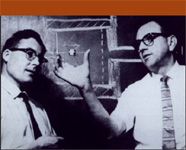
J.E. Lovelock (left) with A. Zlatkis. Lovelock invented the electron-capture detector and is known internationally for his theories on environmental topics. Zlatkis is holding an electron-capture detector.
The Start of the International Symposia on Chromatography
Soon after the advent of GC, British and Dutch scientists realized the importance of the rapid exchange of information. This is how the first international symposium on "vapour-phase chromatography" (as the technique was then called), held in 1956 in London, was born. As a logical follow-up to this meeting, an organization — the Gas Chromatography Discussion Group (GCDG) — was formed and two years later, it organized the second international symposium in Amsterdam, The Netherlands. From then on, the GCDG and its descendents regularly organized biannual international symposia in various European cities. Meetings in the first decade essentially dealt only with GC but slowly, papers on other chromatographic techniques also were included in the program. Parallel to the widening of the scope of the symposia, the GCDG widened its remit becoming the Chromatography Discussion Group in 1972, and then, in 1984, the Chromatographic Society.
The first two symposia of this series count among the most important meetings involving scientific developments in the second half of the 20th century, and the 1956 symposium actually represented one of the first worldwide meetings to describe advances in analytical chemistry involving instrumental techniques. In the next few decades, chromatography, along with mass spectrometry (MS) and nuclear magnetic resonance (NMR) spectroscopy, developed as the three most important modern methods of analysis. In this development, the biannual chromatography symposia have played an important role. These symposia largely followed the precedents laid down in the first two meetings, being divided into theory, apparatus, and applications. Soon after each meeting, the proceedings were published in book form and each paper was followed by a report on the discussion following its presentation; sometimes these discussions were more interesting and important than the papers themselves.

Table I: The first dozen years of the International Symposium on Chromatography
It is remarkable how so many of the ideas first propounded at these meetings (supercritical fluid chromatography [SFC], GC–MS, high-speed separations, and preparative-scale separations, to mention a few) reached fruition later when advances in materials, electronics, and computing made them possible.
This year, the Chromatographic Society celebrates its 50th year. On this occasion, it seems appropriate to note the importance of these symposia and of the papers presented at the individual meetings. Information on the first two symposia, with a summary of the most important new developments presented there, was discussed in 2003 by Leslie Ettre (5). This column will consider some of the developments described in the next five meetings, from 1960 to 1968 (Table I). Bibliographical data of the proceedings of these symposia are given in Table II.

Table II: Bibliographical data of the proceedings of the biannual ISC meetings
1960 Edinburgh
Undoubtedly, the most important presentation under the theory section was that by Purnell and Quinn entitled "An Approach to Higher Speeds in Gas-Liquid Chromatography." This was the first paper to consider the theoretical aspects of this topic which, along with the efforts of Cramers and others, has at last come to practical fruition over 40 years later (see, for example, reference 6). Some chromatograms were presented showing separations of lower hydrocarbons on 75 cm × 4.5 mm packed columns in about 60 s. These appear poor to the modern eye until it is realized that they were obtained with a recording galvanometer rather than a potentiometric recorder so the peaks appear as arcs of curves.
Another paper under theory was entitled "Structural Analysis of Hydrocarbons by Capillary Gas Chromatography in Conjunction with the Methylene Insertion Reaction," by Simmons and colleagues. This lies in my personal category of "Papers that I wish I had written." It is one of the most elegant applications of both organic synthesis and capillary GC. The basis of the work was that starting with a small volume of a known hydrocarbon (2,2,4-trimethylpentane) and reacting it with diazomethane, CH2 groups were introduced into the C8 molecule to produce statistically predictable amounts of different C9 hydrocarbons. The elegance of the method from a chromatographic point of view lies in the fact that the random insertion of the methylene group only proceeds in a predictable manner at high dilution so separation on capillary columns and detection with a high-sensitivity detector (in this case the argonionization detector) are required. In the question session at the end of the presentation, it was suggested that the technique might be applicable to aromatic hydrocarbons and possibly to other classes of organic compounds. Sadly, to the best of my knowledge, this work was never pursued further, either in Shell Development Co., where the work originated, or elsewhere.
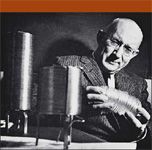
M.J.E. Golay, the inventor of capillary GC who first established the theory of such columns and then, with his colleagues at Perkin-Elmer demonstrated them in practice. The photo shows him with early stainless steel capillary columns.
In the section on apparatus and technique, there was a paper by Lovelock on the design and performance of the argonionization detector and several by other authors on flame-ionization detection (FID). Most of the physical properties of gases have been used to design detectors for GC (thermal conductivity, aqueous conductivity of dissolved effluent gas, velocity of sound, gas density, ionization techniques, etc.). In the end, FID became the workhorse detection method until the advent of reliable mass spectrometers. The argon detector virtually disappeared to be resurrected a little later as the electron-capture detector, which still holds a special place in the hierarchy of selective detectors. There were also three papers on the characteristics of the flame-ionization detector that underline the remarkable tolerance of this device to variables such as flow rate of the gases to the detector and the potential on the collector electrode. A paper by Scott and Cumming described the presentation of chromatograms on a cathode ray tube, common practice today, but representing a considerable novelty at this time.
The following section on theory and applications opened with a short paper by Marcel Golay on various considerations of the differences in performance between packed and capillary columns (or open-tubular columns as Golay preferred to call them). This led Golay to propose a sort of cross between the two types of column in the form of a capillary with a thin coating of a solid support on the inner wall, which carried the stationary liquid. This suggestion was indeed taken up commercially by Perkin-Elmer under the name of support-coated open tubular (SCOT) columns. In spite of the excellent theory behind such columns, they never achieved great popularity, partly in academic establishments perhaps because they were difficult to make with (cheap) student labor and partly because of the developments in glass capillary columns. Also, the solid support on the inner wall was not totally free of adsorption effects.
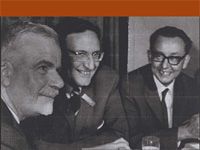
(Left to right) A.V. Kiselev, J.F.K. Huber, and J. Janák. Kiselev (Moscow) was one of the pioneers of gas-adsorption chromatography; Huber was one of the first workers to develop HPLC; and Janák (Brno) developed one of the earliest gas chromatographs.
In the general applications section, there were three papers on the GC separation of inorganic compounds, a field that seems to have reemerged in recent years for speciation analysis (for example, see references 7 and 8). Finally, there was a paper on the analysis of gasoline by GC in which the possibility of octane rating was touched on in the discussion section. The possibility of obtaining octane ratings by GC remained a holy grail for the petroleum industry for many years but invariably foundered on the effect of addition of the lead alkyls. It was not until these compounds were abandoned that the method had any chance of success and even now it has not replaced the CFR engine.
Rather surprisingly, there was a short, two-page report by H.P. Angelé on the East German Working Group on GC. This report implies a very active pursuit of the subject in East Germany, particularly for process control. This was at a time before the stringent restrictions on work and communication with the West were enforced and one wonders about the lost contributions that might have ensued if the political situation had been more favorable.

R.P.W. Scott with (left) Howard Purnell. Scott participated in many aspects of GC from its earliest days and later became a pioneer in HPLCâMS; Purnell was one of the best theoreticians of chromatography.
1962 Hamburg
This meeting marked the resurgence of German science after the devastation of the war and 11 of the 27 papers were by German authors. Undoubtedly, the most prescient paper, not only at this meeting but also in the whole ISC series, was the plenary lecture titled "Future Possibilities in Microanalysis" given by A.J.P. Martin. In this remarkable paper, Martin summarized the advantages of working on a nanoscale, which are now being realized some 44 years later. The only thing Martin got wrong was in advocating a top-down approach, that is, making conventional equipment smaller and smaller whereas today, the tendency is to emphasize a bottom-up approach by assembling molecules into the desired configuration.
In the theory section, the name of J.F.K. Huber (a name that would have considerable future significance) appeared for the first time as a coauthor of a paper with A.I.M. Keulemans. The most significant paper in this section was one by Desty and colleagues demonstrating that the nature of the carrier gas and the average column pressure could have an effect on retention; in effect, a precursor of SFC. A paper by Adlard, Khan, and Whitman showed that capillary columns could be used for thermodynamic studies such as activity coefficient determination, in spite of the very small amounts of solute and solvent involved. The use of GC for the determination of fundamental thermodynamic properties has fallen out of favor in recent years, although there are still a few practitioners (see, for example, reference 9).
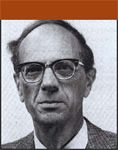
J.J. Van Deemter, the man who, with his colleagues at Royal Dutch/Shell developed the famous equation describing the efficiency of chromatography columns that bears his name.
The apparatus section had several papers on temperature programming and one by Baumann, Johnson, and Klaver reported subambient programming using the equipment that became the standard for this work in the future. These authors used carbon dioxide coolant and this was used by a number of instrument manufacturers, but in my experience, a vast amount of carbon dioxide was necessary if really low starting temperatures were required and liquid nitrogen was a much better practical proposition. Another paper by Henneberg and Schomburg (the latter, another name of significance in the future) concerned the use of a mass spectrometer to identify peaks emerging from a capillary column. This paper is interesting to read in retrospect because it demonstrates the weaknesses of the combination in its early days. These can be summarized briefly in that the mass spectrometers at the time were intended for mass spectroscopists and were complex and unreliable monsters, and that without computer-aided identification, the manual interpretation of the mass spectra represented a mammoth task. I was involved in the combination of GC with MS from 1963 onward and, although the downtime was horrendous by modern standards, a few hours of successful operation would yield data requiring several weeks to interpret.
A presentation under applications by two Israeli workers pointed the way to the algorithms that would be used later for computer-aided handling of data. Finally, in the discussion after a paper by Berry, there was much useful information about the materials of construction of GC equipment if trace quantities of compounds were to be detected. For example, nylon (used extensively at this time for gas supplies) is permeable to both water and oxygen, and metal tubing must be used for this type of work.
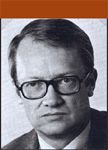
G. Schomburg, who developed the coupling of capillary columns to MS detectors.
A new feature of this symposium was the introduction of discussion panels on qualitative and quantitative analysis, detection, and data handling. Again, many techniques were suggested and discussed that reached fruition with the developments in computers.
1964 Brighton
The organizers of this meeting tried to break away from the previous categories of theory, apparatus, and applications (categories that were admittedly somewhat arbitrary and overlapping) and attempted to address the wider issues involved, summarized by a plenary lecture by J.S. Rowlinson entitled "Molecular Interactions in Liquids and Solutions." Another plenary lecture was presented by Calvin Giddings; much of this paper's mathematics is beyond me, but it includes an interesting paragraph near the end, which is worth quoting in full:
"One of the most interesting features of ultra high pressure gas chromatography would be its convergence with classical liquid chromatography. A liquid is normally about 1000 times denser than a gas; at 1000 atmospheres, however, gas molecules crowd together with a liquid-like density. At such densities intermolecular forces become very large and are undoubtedly capable of extracting big molecules from the stationary phase. . . . In total, an ultra high pressure gas system probably would show some advantages over an ultra high pressure liquid system but either one might show undreamed of possibilities."

E.R. Adlard, with a homemade gas chromatograph.
The following paper by R.P.W. Scott described the performance of a 40-ft long packed column under temperature and flow programming conditions and with inlet pressures as high as 200 psi. Scott was able to attain as many as 28,000 plates with this column and it is interesting to speculate how packed columns might have developed if high inlet pressures had been employed routinely, but the development of capillary columns rendered this approach unattractive.
Under the category of "Techniques of Separation and Identification," there were two papers (one by Haahti and the other by James) on the moving-wire transport system for monitoring the effluent from liquid chromatography (LC) columns. This work had an interesting personal history. During a visit to my laboratory, James casually asked if we had ever considered using FID for LC — to which we replied, quite truthfully, in the negative. However, upon thinking about it afterwards, we came up with the idea of a moving belt system and, by the time of the Brighton meeting, we had acquired enough material for a publication. However, when we found that James was proposing to publish at Brighton on the subject, we withdrew submission of our work. We pursued various versions of the technique with a rotating wheel in place of a moving belt. This was published later and a version was sold commercially in the United States for some years. We also developed a related device for passing a gas over a thin-layer chromatography (TLC) plate in a closed tube to a flame-ionization detector. This idea eventually appeared independently in a different form as the Iatroscan device, in which the TLC "plate" was a thick wire onto which the stationary phase was deposited and which passed directly through the flame.
The second part of the meeting consisted of 10 discussion sessions with topics ranging from biochemical separations to process monitoring and control. These sessions were reported in two to four pages each in the proceedings and, although it cannot be said that the experiment was wholly successful, the format was continued for two more meetings.
1966 Rome
The theory section was opened by Howard Purnell, who gave a plenary lecture titled "Gas-Chromatographic Study of Chemical Equilibria." Howard Purnell was the author of what I regard as the magnum opus on GC for theoretical studies. Unfortunately, in his later career, he spent much of his effort on "window diagrams" which are now, with the universal acceptance of capillary columns, in much the same category of abortive efforts as Martin's gas-density balance. Rather surprisingly, in view of the small amount of work currently done using GC for theoretical studies, this meeting contained four excellent papers on the determination of various thermodynamic functions. The theory section also contained a paper by Pretorius continuing the work first reported by Purnell and Quinn at the 1960 symposium on high-speed separation. Also included in this section was a paper by Hollis and colleagues on the separation of gases using porous polymers. The work described was (and still is) of considerable practical significance but its inclusion under theory seems strangely misplaced.
The apparatus and techniques section included several interesting pieces of work. Barker and colleagues discussed the design of a circular chromatographic system for preparative separations. This design, which was mechanically complex, never lived up to its promise and for a number of years there was heated discussion as to its feasibility. However, one could claim that it was the precursor of simulated moving-bed chromatography, which is used extensively now for preparative separations in the pharmaceutical industry. Littlewood and colleagues described a detector that revolved around an oxygen sensor. The principle of operation is best described by paraphrasing the authors' description: The primary stream of carrier gas from the column joins a secondary stream that passes through an oxygen generator that generates oxygen continuously, thus, introducing a certain concentration of oxygen in the secondary gas stream. The combined gas stream passes through a reactor in which the organic effluent from the column is oxidized completely to carbon dioxide and water, thereby reducing the oxygen concentration. The gas leaving the reactor passes through the oxygen sensor, which feeds back a signal to the generator in an effort to bring back the concentration of oxygen to the initial equilibrium value. This signal is monitored by a potentiometer recorder in the usual way to produce "peaks" that are a record of the current against time in the generator. The virtue of this device is that it is the only detector that is truly quantitative but in practice, the combination of "wet chemistry" and electrical signals as in the Dohrmann microcoulometer and the Hall detector (the most successful) always presented significant drawbacks such as a relatively slow response time and a large dead volume so that they were not compatible with capillary columns.
The novel applications section did indeed live up to its name with a paper by Gil-Av on chiral separations, one by Sievers on the determination of beryllium as a complex with trifluoroacetyl-acetonate down to 10–13 g with an electron-capture detector, and one by Juvet on the separation of metal chlorides in columns containing fused salts as liquid phases. The separation of chiral compounds is now of prime importance but the work on beryllium that would now be classed under occupational hygiene appears not to have been pursued nor has the use of fused salts as stationary phases.
In the final section titled "Techniques Associated with Chromatography," it is interesting to note the appearance of several papers on data handling and the use of integrators, demonstrating that the problem of handling the large amount of data from capillary columns and even more from GC–MS was, at last, being recognized and addressed.
Among the discussion sessions at this meeting there was one on liquid chromatography with Csaba Horváth as the discussion starter. In his presentation, Horváth described some of the ideas that he developed so successfully later on. He also described an electrochemical detector which, although only suitable for compounds capable of oxidation or reduction, represented a significant contribution to detectors for LC eluents, which at that time were still dominated by low sensitivity, large volume refractive index devices.
1968 Copenhagen
The papers in the theory section were disappointing on the whole, but there was one by Liberti and colleagues on capillary columns coated with graphitized carbon black, which is still relevant and could be claimed to be a precursor of the later work by Knox on graphitized HPLC packings.
The plenary paper in the novel applications section was by Lovelock on the phenomenon of electron capture and some of the properties of the electron-capture detector. He discussed, among other things, the effect of chemical structure on the electron affinity of molecules. Lovelock postulated that many physiologically active compounds had a high electron affinity and indeed in another paper, he claimed that many carcinogens were electron capturing. This interesting claim never seems to have been followed up. This section contained a paper on pyrolysis-GC of biological material and the theme of pyrolysis-GC was continued in four more presentations in a session devoted to this (now almost obsolete) technique.
I have to confess that the highlight of this symposium for me was a paper that I presented titled "An Apparatus for the Detection of Interfaces Between Products in Pipeline." This unlikely-sounding topic followed from a suggestion by Lovelock that, due to the high sensitivity of electron-capture detection (ECD), strongly electron-capturing compounds (mainly polyhalogenated molecules) could be used in a manner analogous to radioactive tracers. The principle had been used earlier for monitoring stack gas profiles by releasing sulfur hexafluoride, a biologically unreactive gas with a high electron affinity, but the work described here considerably extended the technique. In the petroleum industry, "common carrier" pipelines pump batches of different hydrocarbon streams from different manufacturers down the same line so that a batch of gasoline from Manufacturer A might be followed by kerosene from Manufacturer B. There is no physical barrier between the two streams but interfacial mixing is minimized by pumping under turbulent flow conditions. Arrival of each stream at the receiving station was determined by manual monitoring of the density of the liquid. In the method described in this paper, a very small amount of a polyhalogenated compound (or compounds) was injected into the pipeline at the source and the liquid was constantly monitored by GC-ECD at the receiving depot. The arrival of each stream could be detected with great accuracy and, if the streams had different mixtures of labeling compounds, the pattern of peaks obtained could be used to automatically switch valves to specific storage tanks. Alas, the method was ahead of its time and was not taken up by the industry.
There were a number of papers on data handling and this meeting marked the serious entry of computers into this field. There were also two papers on aspects of LC (but not yet high performance LC [HPLC]) and a paper by Rijnders and colleagues of the Shell Laboratory in Amsterdam on SFC. Although not the first publication on the topic, this paper generated considerable interest in SFC. For some reason, the authors chose n-pentane, ether, and isopropanol as supercritical mobile phases and the sight of their apparatus surrounded by fire extinguishers made me decide not to follow this line of work.
Conclusion
When I retired from active research some considerable time ago, I thought that within two or three years I would be totally out of touch with developments in the field of separation science. That this has not been the case is due largely to the fact that many current advances were outlined in principle in these early symposia, although many had to await advances in electronics and particularly the advent of small computers. This is not to denigrate modern work and there have been spectacular advances in MS and the "omics" (proteomics and so forth). There also have been major advances in miniaturization and these topics will be with us for some considerable time in the future.
The 1968 meeting marked a time when GC was becoming a mature technique and HPLC was taking its place. Unfortunately, those working in HPLC decided that their interests would be best served by establishing a symposium series on HPLC so that by the early 1970s, the two mainstream chromatography topics had parted company (to the detriment of both in my opinion). Also, around this time, the Riva del Garda meetings on capillary chromatography were established and this further weakened the impact of the International Symposium on Chromatography series. Also, from 1963 onward, the International Symposia on Advances in Chromatography, organized by Al Zlatkis at Houston University, catered to North American workers.
Another flaw in the early International Symposium on Chromatography symposia was that, although the proceedings of each meeting were reported extremely well and promptly, they were published in the form of books and it was not until later that proceedings were published in journals (usually Chromatographia or the Journal of Chromatography) and the contents of the meetings became available to a wider audience.
In spite of these drawbacks, many a modern researcher could profit by reading the accounts of the early meetings because they undoubtedly will find topics reported that would be well worth returning to for further study. Without knowledge of past work it is more difficult to contemplate future developments.
From 1988 to 2004, "Milestones in Chromatography" editor Leslie S. Ettre was associated with the Chemical Engineering Department of Yale University (New Haven, Connecticut), first as an adjunct professor and then as a research fellow. Previously, he had been with the Perkin-Elmer Corporation for 30 years. He is currently a member of LCGC's editorial advisory board. Direct correspondence about this column to "Milestones in Chromatography," LCGC, Woodbridge Corporate Plaza, 485 Route 1 South, Building F, First Floor, Iselin, NJ 08830, e-mail lcgcedit@lcgcmag.com
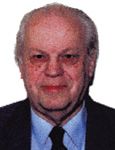
Leslie S. Ettre
Edward A. Adlard started his activities in the field of GC in 1952 at Shell Research Ltd., Chester, U.K., and was associated with this company until his retirement over 10 years ago. He also has served as one of the editors of Chromatographia.
References
(1) P.J.T. Morris, Ed., From Classical to Modern Chemistry; the Instrumental Revolution (Royal Society of Chemistry, Cambridge, 2002).
(2) D.L. Camin and A.J. Raymond, J. Chromatogr. Sci. 11, 625–638 (1973).
(3) T.P. Hilditch, The Industrial Chemistry of Fats and Waxes (Chapman & Hall, London, 3rd ed., 1949).
(4) T.P. Hilditch, The Chemical Composition of Natural Fats (Chapman & Hall, London, 3rd ed., 1956, 4th ed., 1964).
(5) L.S. Ettre, LCGC 21(2), 144–149, 167 (2003).
(6) A. Van Es, High Speed, Narrow Bore Capillary Gas Chromatography (Hüthig Verlag, Heidelberg, 1992).
(7) J. Szpunar and R. Lobinski, Hyphenated Techniques in Speciation Analysis (Royal Society of Chemistry, Cambridge, 2003).
(8) A.V. Hirner and H. Emons, Organic Metals and Metalloid Species in the Environment (Springer Verlag, Berlin, 2004).
(9) N.A. Katsanos and G. Karaiskakis, Time-Resolved Inverse Gas Chromatography and Its Applications (HNB Publishing, New York, 2004).
Common Challenges in Nitrosamine Analysis: An LCGC International Peer Exchange
April 15th 2025A recent roundtable discussion featuring Aloka Srinivasan of Raaha, Mayank Bhanti of the United States Pharmacopeia (USP), and Amber Burch of Purisys discussed the challenges surrounding nitrosamine analysis in pharmaceuticals.
Extracting Estrogenic Hormones Using Rotating Disk and Modified Clays
April 14th 2025University of Caldas and University of Chile researchers extracted estrogenic hormones from wastewater samples using rotating disk sorption extraction. After extraction, the concentrated analytes were measured using liquid chromatography coupled with photodiode array detection (HPLC-PDA).











